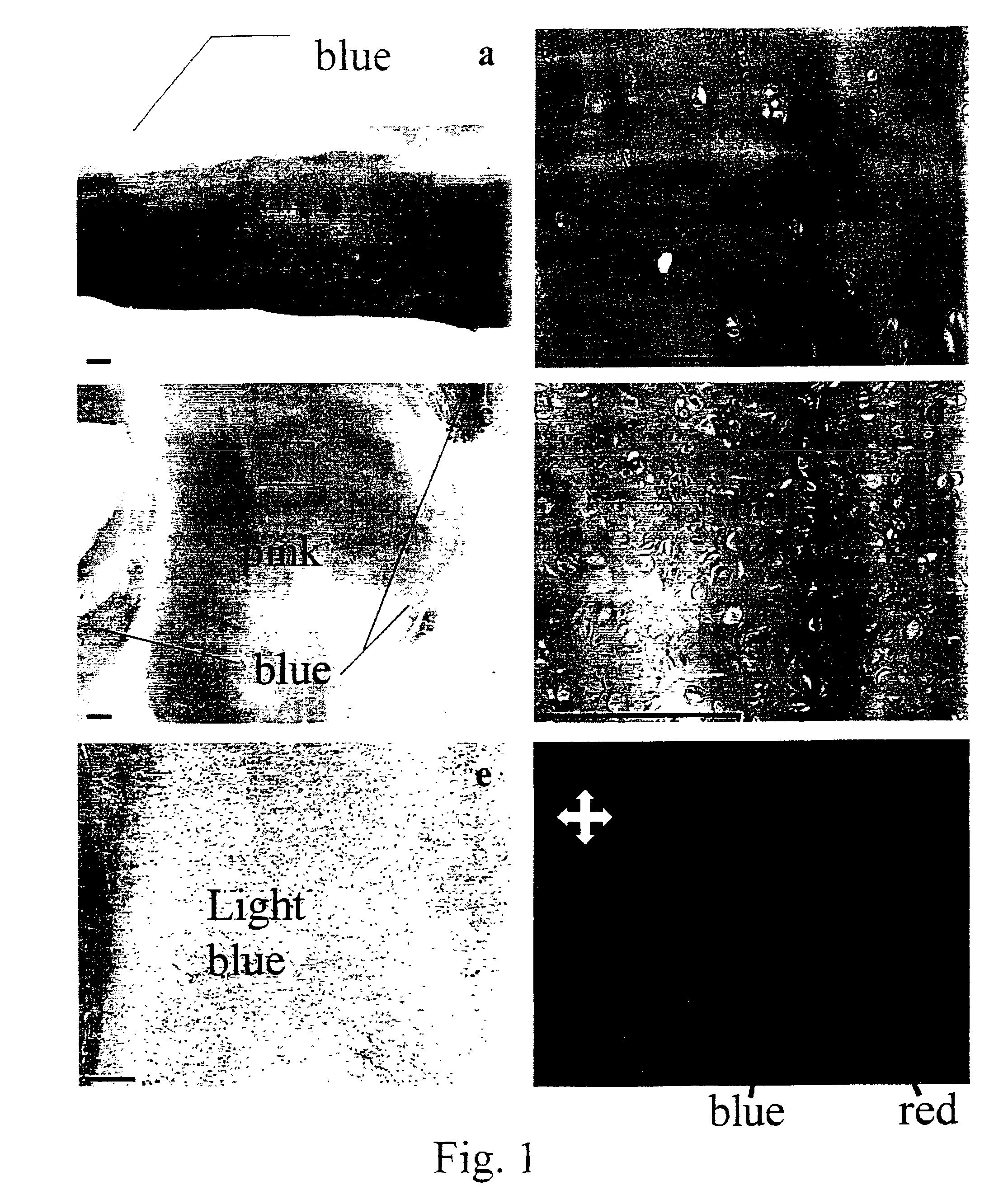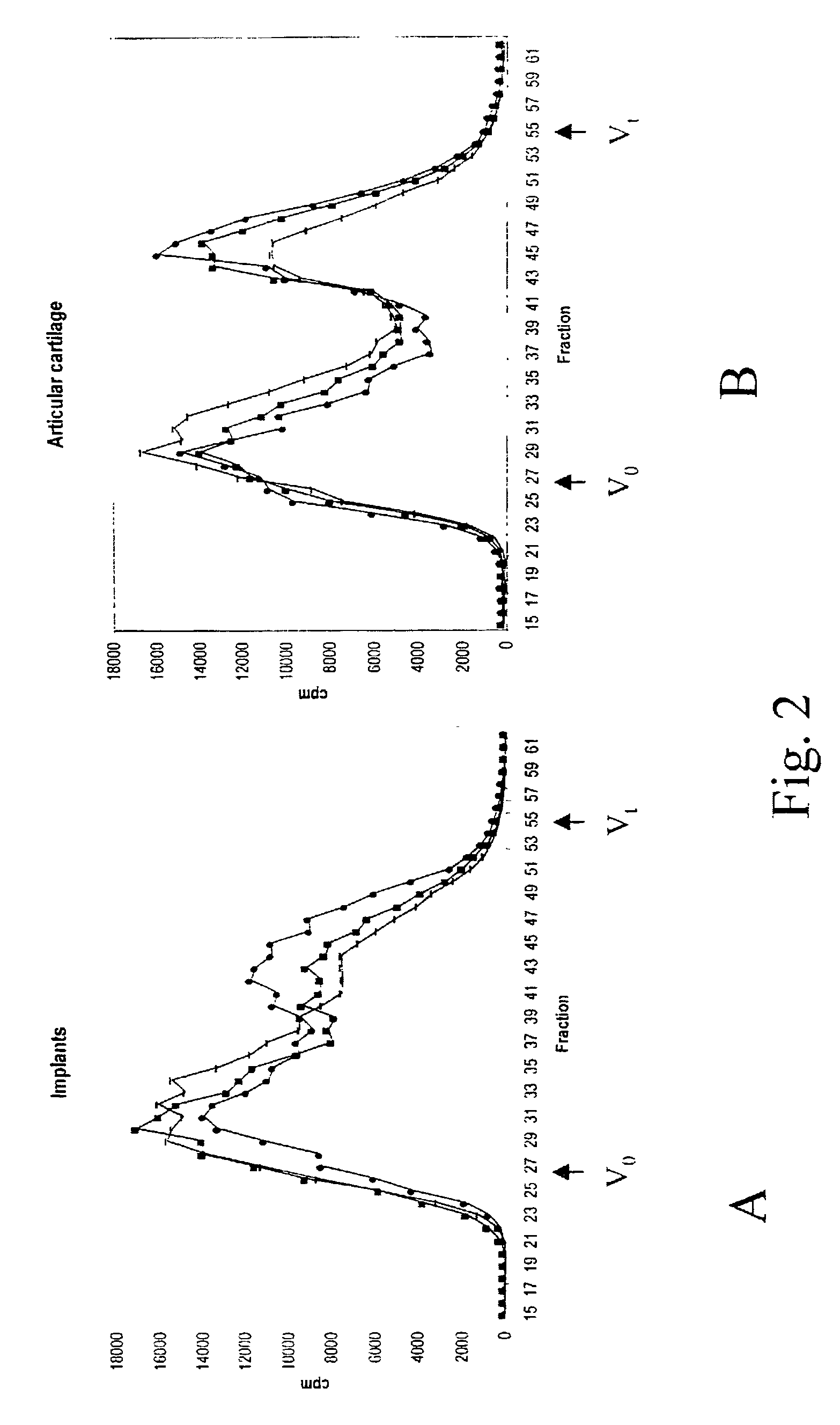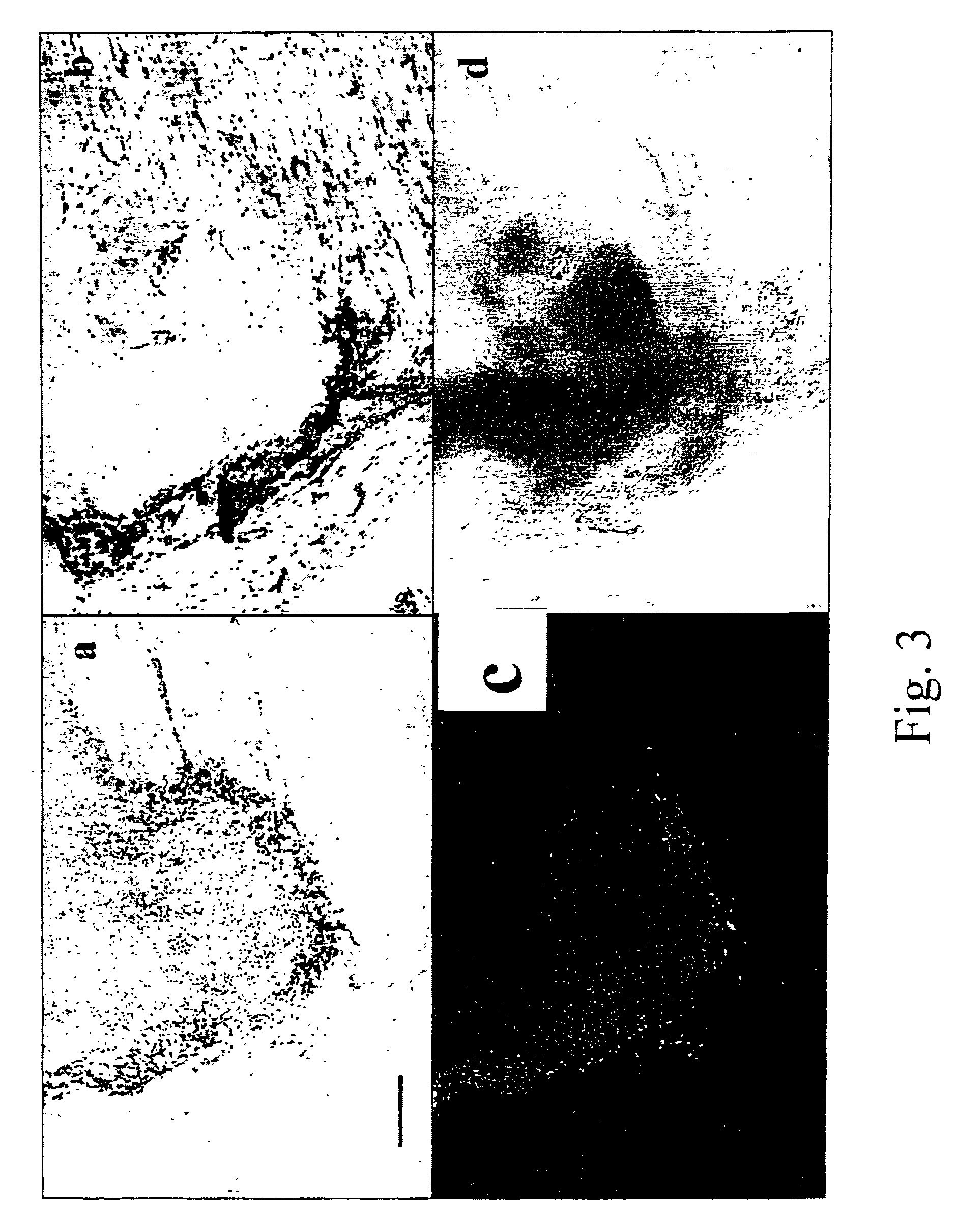In vivo assay and molecular markers for testing the phenotypic stability of cell populations and selected cell populations for autologous transplantation
a cell population and autologous transplantation technology, applied in the field of in vivo assays and molecular markers for testing the phenotypic stability of cell populations and selected cell populations for autologous transplantation, can solve the problems of partial thickness defects degenerating into osteoarthritis of the involved joint, severe limitation of joint function, and inability to detect the phenotypic stability of the cell population
- Summary
- Abstract
- Description
- Claims
- Application Information
AI Technical Summary
Benefits of technology
Problems solved by technology
Method used
Image
Examples
example 1
Cartilage Obtainment and Cell Isolation
[0086]Articular cartilage was obtained, within 24 hours after death unless otherwise indicated from human donors not having suffered from any articular disease. After macroscopic inspection to rule out gross joint pathologies, cartilage was sliced full thickness from femoral condyles and placed in Hank's Balanced Salt Solution (“HBSS”) (available from Life Technologies) supplemented with 200 units / ml penicillin, 200 μg / ml of streptomycin, and 0.5 μg / ml of amphotericin B (Life Technologies). After two washes in HBSS during 5 minutes at 37° C., cartilage was finely minced and placed in a sterile 0.2% crude collagenase (Life Technologies) solution in Dulbecco's Modified Eagle Medium (“DMEM”) with high glucose (Life Technologies) containing 10% foetal bovine serum (“FBS”) (Biowittaker), 200 units / ml penicillin, 200 μg / ml of streptomycin, and 0.5 μg / ml of amphotericin B. After overnight incubation at 37° C., cells were washed twice in culture medium...
example 2
[0087]Cells isolated in example 1 were washed twice in sterile phosphate buffered saline (“PBS”), re-suspended in a volume of 100 μl of PBS and injected intramuscularly in the thigh of female, 4-5 weeks old immune-deficient nude mice. Animals were sacrificed after 3 weeks by cervical dislocation and the thigh dissected to retrieve the presence of the implant in the site of injection. Implants were weighed, and either snap-frozen and stored in liquid nitrogen for in situ hybridisation or fixed in freshly-made 4% formaldehyde for 4 hours for histology and immunohistochemistry. After fixation the samples were included in paraffin, cut in 5 μm thick sections and coloured according to standard protocols (Alcian blue pH 2.5, Toluidine blue, Masson's trichrome, Safranin O) (Manual of Histological Techniques). Different amounts of cells, from 20×106 to 5×105 were used for injection in order to establish the minimum amount of cells that yielded a cartilage implant. Although the ...
example 3
Serial Passaging Results in Impaired Chondrocyte Stability
[0093]Cartilage samples from 3 independent human donors were placed in monolayer culture. Upon passaging, an aliquot of cells was destined to duplicate injection in the in vivo assay of example 2 and to RNA isolation. Chondrocyte stability, as measured by the retrieval of a cartilage implant after 3 weeks in the site of injection, was lost between passage 1 and 3.
PUM
| Property | Measurement | Unit |
|---|---|---|
| volume | aaaaa | aaaaa |
| volume | aaaaa | aaaaa |
| pH | aaaaa | aaaaa |
Abstract
Description
Claims
Application Information
 Login to View More
Login to View More - R&D
- Intellectual Property
- Life Sciences
- Materials
- Tech Scout
- Unparalleled Data Quality
- Higher Quality Content
- 60% Fewer Hallucinations
Browse by: Latest US Patents, China's latest patents, Technical Efficacy Thesaurus, Application Domain, Technology Topic, Popular Technical Reports.
© 2025 PatSnap. All rights reserved.Legal|Privacy policy|Modern Slavery Act Transparency Statement|Sitemap|About US| Contact US: help@patsnap.com



